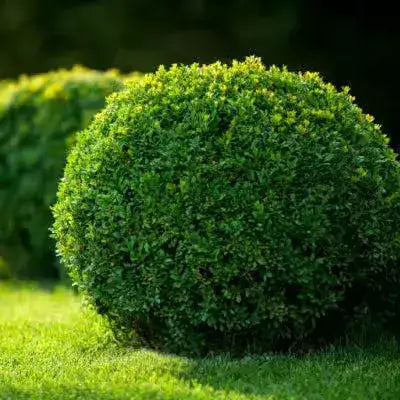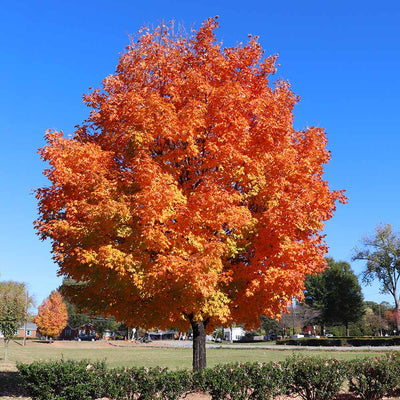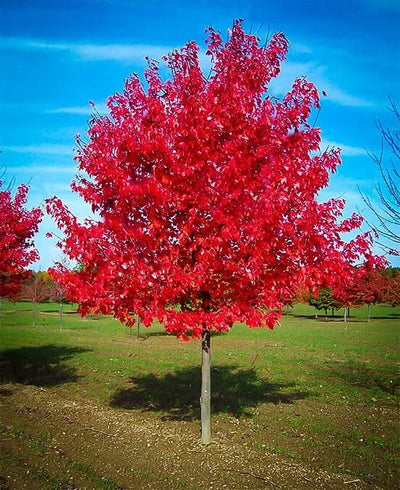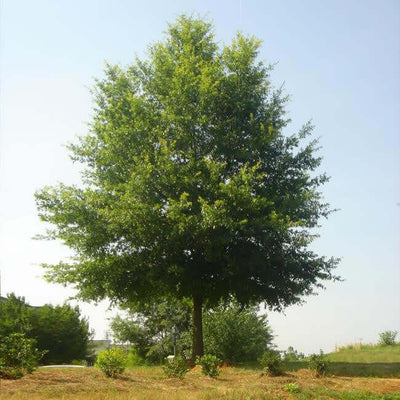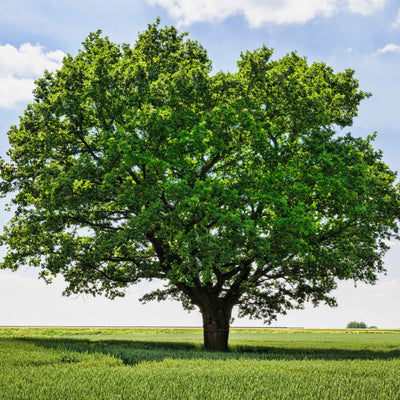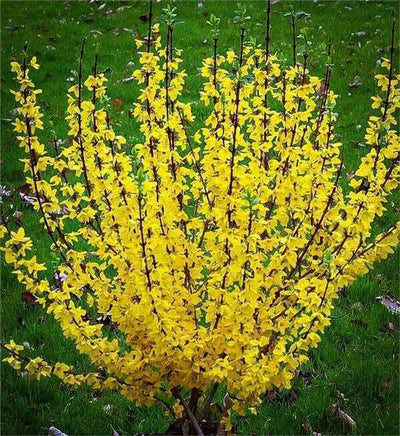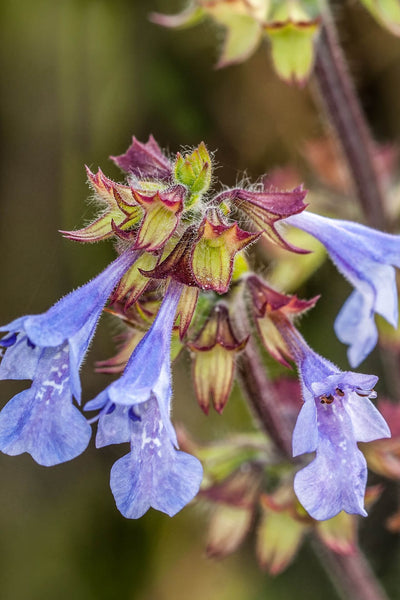Most Suitable Plants for Dry Weather and Easy-to-Grow Shrubberies
The rising temperatures globally are making it necessary to master dry-weather gardening for most homeowners and gardening professionals. It is easy to maintain a garden full of life and color with the help of plants that are drought-resistant and conserve water. Such plants are a perfect choice for gardeners in areas with little rainfall and are also meant for those wishing to conserve water. The plants in this post shall include shrubs, flowers, and trees.
Drought-Tolerant Maple Trees
The various types of maples include the Sugar Maple and the Red Maple, and of course, the Japanese Maple. In addition to being extremely beautiful, Maples are also very drought-tolerant and thus perfect for any dry garden. They are well appreciated for their bright and fiery colors in the fall and their uniquely shaped and hand-sized leaves. They can grow to around 75 feet and provide plenty of fear and coolness under their wide canopies, and help conserve a lot of water too. They are also very drought-resistant and thus perfect for any dry garden. It is for this reason that most find Maples to be extremely beautiful. Interestingly, Red Maples come with other medicinal benefits in the form of maple syrup.
Oak Trees (Quercus spp.)
Oaks are another fine option for dry situations. Their deep taproots enable them to reach the underground water during dry periods. The White Oak and Red Oak are two familiar species because of their strength and durability. The hardwood of oaks is very well-regarded for the construction of furniture, while the bark is also widely recognized in the field of ethnobotany due to its therapeutic qualities. Oak trees are very large and slow-growing, and provide vast canopies that provide evaporation shields. The canopies also provide water essential to the ground, eliminating the need for rainfall.
Drought-Resistant Shrubs
Privet Shrubs (Ligustrum spp.)
Private shrubs are popular for their robustness and enjoyment of dry periods. European Privet and Chinese Privet are able to survive in arid and drought situations. Private shrubs served well for garden hedges because of their small and waxy leaves, which minimize water loss. Their deep root systems also enable them to survive with very low watering. Many species of privet are also claimed to possess some remedial virtue against arthritis and the common cold.
Forsythia (Forsythia spp.)
Forsythia is a native plant from East Asia that is beautiful and exceptional at surviving droughts. Blooming bright yellow flowers that appear in early spring, forsythias are well-suited for warm and sunny areas. Thin and waxy leaves protect from the strong rays of sunlight and reduce water loss during hot weather. Forsythia shrubs are commonly used for ornamental hedges for sound and privacy. There are various health benefits for forsythia. Burns soreness in the throat and helps with arthritis. Soothes and helps the cardiac muscle function.
Drought-Tolerant Plants for Limited Areas
Lavender (Lavandula spp.)
Lavender is a herb that loves sunny and dry conditions. Once settled, lavender needs little water and is a great plant in dry gardens. Having silvery foliage and purple flowers, lavender helps gardens by adding great fragrances and attracting butterflies and bees. It makes a great addition for gardens that are water-conserving because it can endure drought conditions.
Sage (Salvia spp.)
Another herb that does well in dry weather and is aromatic is Sage. This Mediterranean herb does best in hot and arid conditions and uses very little water, after it has been established. Sage is both culinary and medicinal. This aromatic herb features beautiful gray-green leaves and purple or blue flowers, which enhance any drought-related garden.
Yucca (Yucca spp.)
Yucca is most known for its blade-like leaves and towering flower spikes. This hardy plant is an eye catcher and does well in dry weather conditions. Yuccas are extremely heat and drought-tolerant, which makes them ideal for desert-type gardens or xeriscaping. These and other plants of a similar type, yucca, can add architectural style to a landscape, reaching up to 8 feet.
Ornamental Grasses
Blue Fescue, Muhlenberg, and Feather Reed Grass are types of ornamental grasses that are excellent for gardens in dry weather. These grasses are drought-tolerant, which can help attract insects and birds to your garden. Their long-rooted plants and puffy feathers of plumes are a great addition to any garden, making it feel more alive.
How to Prepare a Dry Garden for a Dormant Plant Bed
To be able to grow plants while there is a dry spell, one has to prepare one’s garden well. Constructing a garden bed for plants that have a tendency to thrive while there is scant rain requires retaining moisture while also preventing evaporation. Here is how to make a moisture-efficient garden bed.
Finding the Garden Bed Location
Drought-resistant plants should only be placed in an area that receives the sun for a restricted time because the sun's heat has a tendency to dehydrate the soil. Darn dry winds that hit dry soil are the ones that also take the moisture away. Look for a place in the garden, away from those influences, that receives enough sun for plants to photosynthesize.
Constructing the Dry Garden Bed
Having better control over how much moisture is retained, the dried raised bed is an easy-to-construct alternative for drought. They are mid-set above the soil level and make the soil loose and easy to drain. If there is enough dehydration to do and the aim is to maximize the downpour, downsets beds are also an option.
Incorporating the Soil Components
Soil without moisture is nothing and is simply a pile of barren rock. There are organic materials that add moisture to the moisture-deprived soil, such as drought-seed, dead plants, and animal parts decomposed over time, along with leftovers from a moldering pile of leaves, and barnyard waste.
Mulching
You can reduce moisture loss in garden beds by adding a layer of mulch. Materials like straw, shredded wood, excess dry grass clippings, etc., also cool the roots.
Efficient Irrigation
Overhead watering, in this case, is not the best practice. Drip irrigation waters plants by adding water directly to the roots. It is best not to water directly from above and to water in the early morning or evenings to reduce evaporation.
Go to TN Nursery to Find Water-Wise Blooming Plants
Building a garden that withstands dryness is no easy feat. One thing that you will need is the correct plants. Do not worry about a lack of beauty in the garden. Even with conservation, everything will be sustainable. Are you prepared to start a garden that is resistant to droughts? The dry weather plants that you need can be found in the online nursery. Visit TN Nursery.
FAQs
What is the most drought-tolerant plant?
Of all the drought-resistant plants, the Agave is one of the most drought-resistant. Its succulent, thick-leaved structure enables it to store water and thus survive in very dry areas. Other plants that resist drought include Lavender, Yucca, and Sage.
Which plant can survive in extremely dry conditions?
The Cactus is the ultimate survivor in very dry conditions. Its thick, fleshy, water-storing stems and the waxy coating covering it, which minimizes moisture loss, enable the Cactus to store water. Other plants like Lavender, Yucca, and Agave also do very well in extremely dry conditions.
Is it okay to plant plants in October?
Drought-resistant plants can be planted during the month of October. In areas with winters that are not as severe, November is a great month for planting Maples, Oaks, and Privets, as they are able to put down roots before the summer’s brutal conditions.
What plant needs the least amount of water?
Out of all species of plants, cacti are the most forgiving when it comes to the amount of water they are given. They are specially designed to live in the desert and survive extreme lengths of time without water. Other drought-tolerant plants include Agave, Yucca, and Lavender.
What is the 70/30 rule in gardening?
The 70-30 rule is the theory that states any garden that has been well taken care of in terms of preparation and maintenance is 70% likely to thrive, while the plants in the garden only account for 30% of that success. This rule is particularly applicable to drought-resistant plants as it emphasizes the importance of well-prepared, moisture-retaining soil.
What is the most resilient outdoor plant?
Agave is considered the toughest of all outdoor plants as it can survive severe conditions without much water. Tough outdoor plants that come close include Lavender, Yucca, and Rosemary due to their tolerance to extreme heat and dryness.
